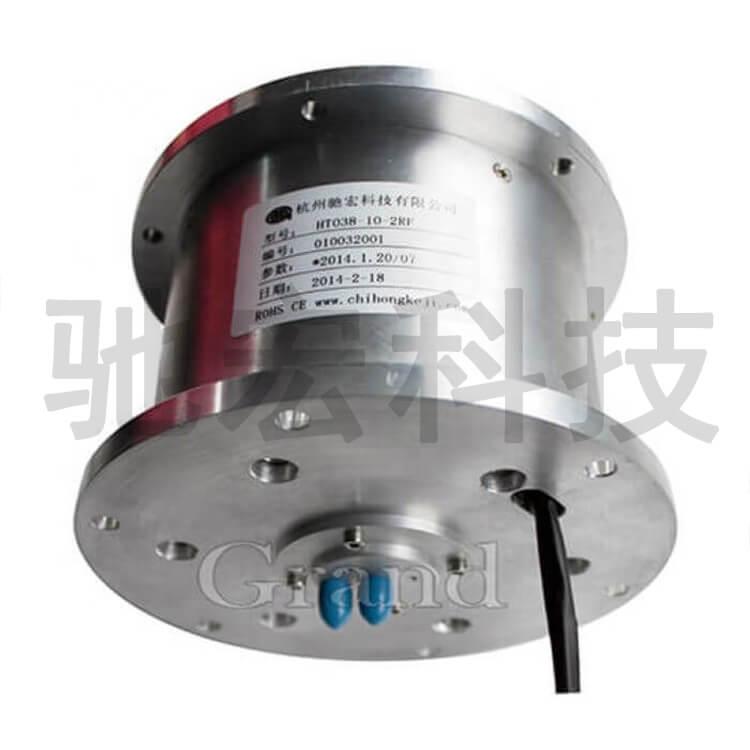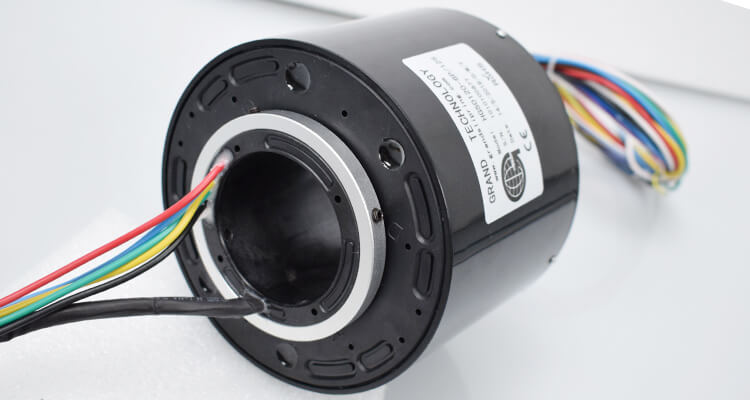The world of electrical engineering often goes unnoticed, but its components, such as the cylindrical slip ring, play a vital role in many industries. This article embarks on a detailed exploration of this indispensable apparatus, highlighting its features, applications, advantages, buying considerations, and imminent trends.
Introduction to the Cylindrical Slip Ring
The seemingly modest cylindrical slip ring is an electromechanical device that serves a crucial role in various industries. Visualize it as a modern genie that aids in transporting the elixir of electricity and data signals from a stationary component to one that rotates, thus King Solomon’s seal in the grand scheme of engineering design.
Constructed as a cylinder, a slip ring employs a minimalistic design: organized concentric rings are laid out parallel to the rotation axis, with brushes in contact sliding over these rings. It is this ingenious design that enables the transmission of power and electrical signals across rotating interfaces, a task that could otherwise involve complex engineering or substantial motion limitations.
Given the broad functionality, cylindrical slip rings fit within a cross-section of applications. Whether it is wind turbines harnessing the power of nature, surveillance systems rotating incessantly to ensure security or amusement park rides imparting thrill and joy, this smart and unassuming device has sealed its place in the core of these operations.
In the milieu of radar communication, for instance, cylindrical slip rings are pivotal for the perpetual rotation of radar antennas, ensuring continuous data transmission. Likewise, revolving restaurants employ these devices to supply electricity to the rotating dining area without any interruption or tangled wires.
Thus, the importance of cylindrical slip rings within various industries is marked not merely by their versatility, but largely their indispensability. As essential as they are in the facilitation of pivotal electrical connections, they are a radiant example of functional innovation in engineering – indeed, a testament to human ingenuity in co-opting the power of rotation for myriad applications.

Detailed Description of the Cylindrical Slip Ring
In the theatre of electromechanical devices, the cylindrical slip ring plays a critical role. Despite its humble appearance, its design entails thoughtful engineering that marries functionality with durability.
To visualize its structure, consider a layered cake. The outermost part is a protective layer made of robust material like metal or plastic for shielding the device from environmental factors. Inside this layer, the next level is a cluster of concentric ‘rings’ or tracks. These tracks are fundamental electrical circuits, often made of copper or other precious metals known for their conductive properties. Each track is electrically separate and carries a unique signal or power.
Now, imagine candles piercing the cake from atop; these are ‘brushes.’ Made of conductive material, these brushes slide over the tracks as the slip ring rotates, enabling electrical connectivity between the stationary and moving parts.
Beyond the structural nuances, it’s the functionality and working mechanism of the cylindrical slip ring that makes a truly compelling narrative. At its core, this device operates on a simple principle: the transfer of electrical signals or power from a stationary to a rotating interface, hence the term ‘slip,’ indicating the sliding action of brushes against the tracks.
During operation, as the rotating part of the device turns, the brushes slide over the tracks while maintaining continual electrical contact. This action allows signals or power to be transmitted through the brushes to the corresponding circuits on the rotating interface, thus, maintaining a consistent, uninterrupted flow of electrical connectivity.
This elegant mechanism holds the secret behind the extensive usefulness of cylindrical slip rings across industries – a simultaneously simple and sophisticated solution to an otherwise complex engineering challenge. Ultimately, it is these design peculiarities and functional mechanics that underscore the utility and resilience of the cylindrical slip ring.
Applications of Cylindrical Slip Rings
Cylindrical slip rings, given their versatile design and distinctive functionality, find myriad applications across diverse industries. Serving as an unsung hero, these devices seamlessly bridge the gap between stationary and rotating elements in a diverse range of systems, enabling a continuous stream of electricity or data signals that many systems heavily rely upon.
Regardless of the field – be it defense, renewable energy, telecommunications, or even the hospitality industry – the cylindrical slip ring contributes notably towards sustainable and efficient operations. Whether it’s enabling the rotation of a radar antenna while maintaining signal transmission or supplying constant power to part of a wind turbine that’s continually adjusting to wind direction, the use cases are expansive and varied.

To delve into a few notable real-world applications, we can start with wind turbines in the renewable energy sector. Wind turbines operate in high-wind environments and face continuously changing wind directions. The turbine’s nacelle, housing the generator, needs to rotate to face the wind direction to harness maximum power. Here, cylindrical slip rings serve as a critical component conveying electrical power and data signals from the rotating nacelle to the stationary tower, thereby facilitating optimal energy production.
In the domain of security and defense, radar systems heavily rely on cylindrical slip rings for the constant rotation of their antennas. As the antenna rotates for scanning, the slip ring ensures the continuous transmission of power and data signals to the antenna from the stationary base, thus enabling uninterrupted radar operation.
Another intriguing application is quite literally revolving – revolving restaurants. These dining spaces often rotate slowly to provide guests with changing views. Despite the rotation, the electricity supply to kitchen appliances, lights, and other amenities must not be disrupted. Here, cylindrical slip rings prove their worth, enabling a continuous electricity supply despite the rotation, entertaining guests with both views and sustenance without any hiccups.
Thus, the reach of cylindrical slip rings extends from the sustainable ambitions of renewable energy, and the crucial operations of defense systems, to the delight of a dining experience. These versatile devices, therefore, play an integral role in aligning technological capability with operational demands across diverse industries.
Advantages of Using Cylindrical Slip Rings
Cylindrical slip rings, in their all-embracing design and functionality, bring several significant advantages. These benefits, extending beyond their basic function, add value to the systems in which they are employed and enhance overall operational efficiency.
A key advantage of cylindrical slip rings is their role in enhancing machine performance while reducing maintenance. Traditional systems without slip rings often face issues like cable twisting, which can lead to wear and tear, ultimately affecting machine efficiency. However, with cylindrical slip rings, such concerns are mitigated as they allow unrestricted, smooth rotation whilst also minimizing power loss due to friction. The result? Enhanced durability and performance of the system and reduced maintenance-related hassles, thereby contributing to cost-effectiveness in the long run.
Another significant advantage is the continuous transmission of power and data. With their ability to maintain electrical connectivity during rotation, cylindrical slip rings ensure that energy or data flow doesn’t suffer unnecessary interruptions. This consistent transmission is vital in fields like telecommunications, wind energy, and radar systems, where the slightest delay or disruption can significantly impact operational efficiency.
The compactness and versatility of cylindrical slip rings should also not be understated. Their compact design makes them suitable for applications with space constraints, not compromising on their robust functionality. Add to this their versatility, and we have a device that can serve various applications across diverse industries, transmitting a range of signals – all while fitting snugly within many different types of equipment.
In the engineering theatre, where compromise is not an option, cylindrical slip rings truly shine. They offer a reliable, efficient, and streamlined solution to the challenge of maintaining electrical connections within rotating systems, taking machine performance and reliability to newer heights. With their distinctive attributes in place, cylindrical slip rings indeed double up as a performance booster and a problem-solver.
Buying Considerations when Choosing a Cylindrical Slip Ring
Deciding on the most suitable cylindrical slip ring is a decision of technical import and often requires careful consideration. Several parameters including the materials used, performance parameters, compatibility with the system, and industry certifications contribute to the usability and dependability of these slip rings.
Durability and the materials used play a pivotal role in determining the overall performance and life span of a cylindrical slip ring. Typically, the rings are made of conductive materials like copper, silver, or gold, which offer excellent electrical conductivity. The brushes, often made from similar materials or graphite, ensure smooth sliding and efficient signal transmission. The external housing might be composed of sturdy materials such as metal or plastic to safeguard against environmental elements. Choosing slip rings with high-quality materials ensures robust performance and durability.
Performance parameters are equally crucial when choosing a cylindrical slip ring. Electrical properties like current carrying capacity, voltage, and resistance to noise should align with the requirements of the application. Mechanical properties, such as rotational speed, life expectancy (number of revolutions), and torque, should also be kept in view. Additionally, environmental factors such as operating temperature range and IP ratings (indicating the device’s resistance to dust and water intrusion) should meet the demands of the working conditions.
Compatibility with the system is another vital aspect. The specifications of the cylindrical slip ring – its dimensions, the number of circuits, types of signals carried (analog, digital, etc.), and method of connection – should be compatible with the system it is going to be a part of. Failure to match the properties can lead to operational inefficiencies or system malfunctions.
Further, it is essential to ensure that the cylindrical slip rings are manufactured to certified industry standards. These standards ensure the device’s safety, reliability, and compatibility with the broader system. Compliance with such standards as ISO, RoHS, and CE can serve as indices of product quality and reliability.
Thus, in selecting a cylindrical slip ring, one is not merely acquiring a part of a machine; one is investing in the reliability, sustainability, and future performance of the equipment. Taking into account these critical factors can aid in making an informed decision and ultimately yield a smooth and efficient operational experience.
Cylindrical Slip Ring Innovation and Future Trends
As technology continues to evolve at a rapid pace, innovations in cylindrical slip ring design, materials, and production methods are shaping the present and carving the future. These advancements are not just enhancing the capabilities of existing applications, but also creating potential for new applications and industry trends.
Latest Technological Advancements in Cylindrical Slip Ring Design
Several innovations have emerged in the design and production of cylindrical slip rings, addressing the constantly growing demands of various industries. Some of these advancements include:
- New materials and surface treatments: The use of advanced materials, like gold-plated alloy rings and brushes, has improved the conductivity, wear resistance, and reliability of slip rings. Additionally, innovative surface treatments, such as diamond-like carbon coatings, are being integrated to enhance friction reduction and performance.
- Modular design: Manufacturers are adopting more modular and scalable approaches to slip ring design, enabling customization to meet diverse requirements with lesser design effort. This adaptability allows for more effective integration into systems of different sizes and requirements.
- Improved sealing and protection: Improved housing materials and designs, along with advances in sealing technologies, are enhancing the environmental resistance of cylindrical slip rings. Higher IP-rated slip rings can now withstand harsher operating conditions, such as extreme temperatures or even underwater applications.
- Enhanced data transmission capabilities: With the growing demand for high-speed data transfer, innovations in slip rings now accommodate faster and more reliable signal transmission. Integration of fiber-optic elements or specialized transmission channels for high-frequency signals has significantly improved data transmission capabilities.
Potential Future Applications and Industry Trends
The continuous development in cylindrical slip ring technology is unlocking new possibilities for their use. Some potential future applications and trends include:
- Electric vehicles and charging infrastructure: With the push for electric vehicles (EVs), cylindrical slip rings could play a vital role in enabling the seamless transfer of power within rotational contact systems in EVs and charging infrastructure that require continuous transmission of power or data.
- Space exploration and satellite systems: As space exploration continues to evolve, cylindrical slip rings can contribute to satellite systems that require continuous rotation for functions like communication, imaging, or orientation, ensuring critical signal and power transfer.
- Medical equipment: In the healthcare industry, the adoption of slip rings could expand to newer equipment like advanced diagnostic scanners or robotics-assisted surgery systems that require constant rotational motion while transferring power and data.
- New energy storage and transmission systems: Advancements in the energy sector may give way to novel energy storage and transmission solutions that demand reliable and efficient rotational power transfer mechanisms. Cylindrical slip rings could find their way into such applications, fostering the development of sustainable energy technologies.
As the evolution of cylindrical slip rings marches forward, the future seems bright, reflecting the indispensable nature of these devices in an increasingly interconnected world. The potential for new applications and industry horizons will undoubtedly attract further attention and investment, ensuring that these small but mighty components continue to play a central role in powering our world.
Conclusion
While they may be unseen and often overlooked, the importance, applications, and considerations of cylindrical slip rings should not be underestimated. These tiny devices hold the potential to propel industries forward, establishing themselves as essential components in any rotating system.
This deep dive into the world of cylindrical slip rings, we hope, has illuminated their role, value, and the considerations you should make in their purchase and usage. It’s clear: in the world of rotating machinery, cylindrical slip rings more than make their mark.
FAQs about Cylindrical Slip Ring
Selecting, installing, and maintaining a cylindrical slip ring in a system can bring forth quite a few questions, especially for those new to the technology. To guide you through, here are some frequently asked questions about cylindrical slip rings:
Q1: What is a cylindrical slip ring?
A: A cylindrical slip ring is an electromechanical device that allows for the transmission of power and electrical signals from a stationary to a rotating structure. It typically comprises conductive rings and brushes that carry the electrical signals, encased within a protective housing.
Q2: Where are cylindrical slip rings used?
A: Cylindrical slip rings have broad applications across a variety of industries. They are used in wind turbines, radar systems, rotating cameras, robotics, and even in revolving restaurants. Any equipment that requires continuous transmission of power or signals while part of it rotates can effectively utilize a cylindrical slip ring.
Q3: What factors should I consider when choosing a cylindrical slip ring?
A: Key factors include the durability and materials used, performance parameters (electrical and mechanical), compatibility with your system, and compliance with certified industry standards. The slip ring must align with your system’s electrical, mechanical, and environmental requirements.
Q4: Can a cylindrical slip ring transmit data?
A: Yes, cylindrical slip rings can transmit a variety of signals, including data signals. They can handle analog and digital signals, making them versatile for applications such as telecommunications and control systems.
Q5: How do I maintain a cylindrical slip ring?
A: Regular inspection to check for any signs of wear and tear or damage is essential. Proper cleaning of the brushes and rings to remove dust and debris can also help extend the slip ring’s lifespan. Always remember to disconnect power before maintenance, and consider consulting with your slip ring manufacturer for specific maintenance guidelines.
See What We Can Do

